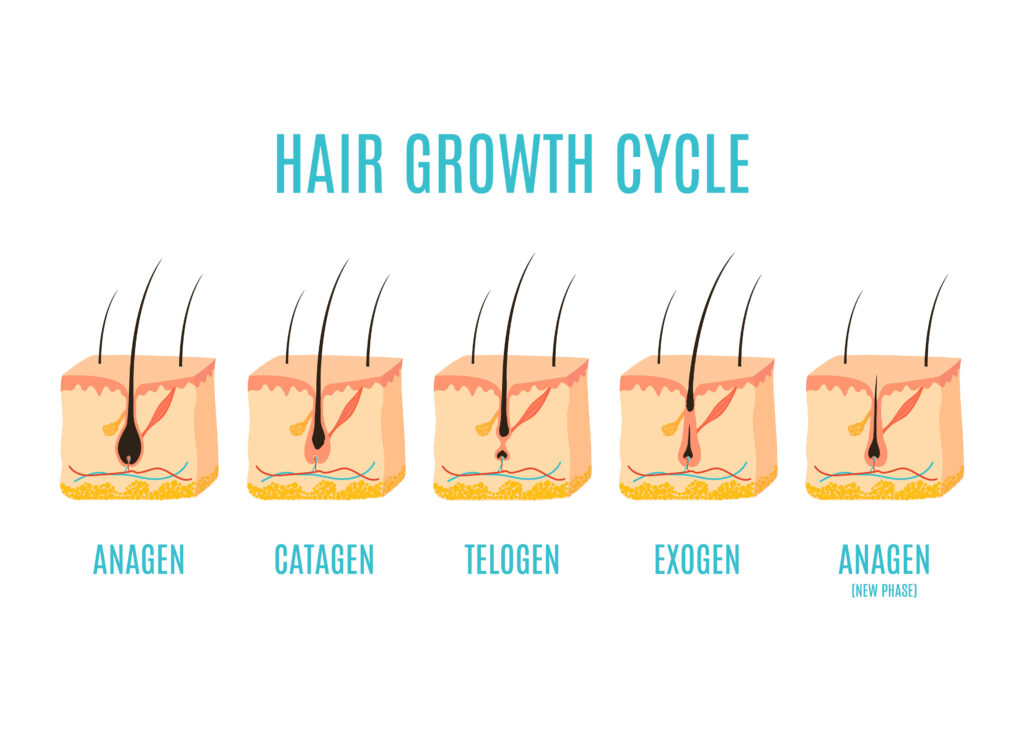Why is laser hair removal not working for you? While most people who go through this hair removal process see good results over time, some people complain after one year or more of treatment that the promised results just aren’t there.
While laser hair removal is more widely available to people than ever before, some people simply aren’t great candidates for it. With all the marketing clams that still exist that it offers permanent hair removal (it doesn’t) unrealistic expectations abound, too.
Laser hair removal treatment typically fails due to human error when the machine settings are set too low to produce good results and is not adjusted properly for your hair color and type. The laser machine may also not be properly calibrated and maintained which is common in the industry.
There are actually a number of other reasons that could also be in play if you saw initial success with laser hair removal or if you never saw the success you were expecting at all.
Can laser hair removal stop working?
Laser hair removal can result in initial success but you may find over time that your results wane. Here are some reasons why:
Laser machine is set improperly
Clinic-grade laser machines require training and are very powerful models that can increasingly be adjusted to serve a wide variety of skin and hair types. While more machines like the Elite iQ by Cynosure can automatically read your skin type with its Skintel® melanin reader technology, most machines still have manual settings that the clinician operating the machine must adjust.
I recall from numerous laser and IPL (Intense Pulsed Light) visits having the clinician constantly asking me during treatment if I felt little or too much pain so they could adjust the setting. This was typically near the beginning of the session or when they encountered areas of my body near bones like the collarbone area which hurts more.
If the setting is too low, you won’t get good hair removal results. If it’s too high, your skin may be burned.
The wrong laser machine is being used
There are four major types of laser used for hair removal: Ruby, Diode, Alexandrite and Nd:YAG. You can read more about each by clicking here.
Ruby is the oldest technology and at this point in time, you really don’t need to use this sort of machine quite frankly. There are better options. Modern laser machines often incorporate two or more laser technologies into one model for versatility involving Diode, Alexandrite and Nd:YAG and sometimes Intense Pulsed Light too. Modern laser machines also add cooling features to protect the skin during treatment.
Double check your skin type – some modern lasers even measure your skin tone automatically – and ensure that your chosen clinic is using the correct model and laser type for your personal situation.
The wrong hair removal machine is being used
Maybe they aren’t actually using a laser hair removal machine…
If you find out the your “laser” hair removal is being done with an IPL (Intense Pulsed Light) machine, then you aren’t getting laser. It’s called IPL because the L stands for “light” not laser. I had 16 IPL sessions in the past and they tend to work best for pale skin and dark hair so if you don’t have both, you’re not a great candidate for hair removal success.
Figure out the exact manufacturer and brand names of the laser machines they have so you can research them on the manufacturer website to ensure this particular laser will work on your skin and hair type.
Laser machine is improperly operated
Similar to an improper setting, the laser machine might be improperly operated by the clinician offering the service. If the laser machine uses a cooling gel which some do, they may apply it incorrectly. The clinician could miss spots of unwanted hair on your body if they are sloppy or lazy.
On a bigger picture view, they might not be very knowledgeable about the hair growth cycle and schedule your appointments incorrectly. Speaking of which…

Your treatment schedule is wrong
Hair grows in cycles and laser hair removal only works during the anagen or growth phase. The good news is that hair typically stays in the growth phase for the longest period of time of all cycles, around 3 – 5 years although some hairs might remain here for up to 7 years.
If you are scheduling appointments too far apart or too close together you will not achieve the results you are looking for and expect. I’ve seen clinics suggest on their website that it’s ok to schedule laser appointments every 2 weeks yet it can take two weeks or longer for hair to fall out after laser treatment! Why would you schedule appointments this close together when you haven’t even achieved the full benefit of the previous hair removal session?
Research suggests that a laser hair removal appointment every 6 weeks is ideal for maximum hair reduction. Any sooner and you’re probably wasting money.
Laser machine is improperly maintained
This is an interesting one and a good question to ask your chosen hair removal clinic before you agree to use their services: How do they maintain and calibrate their laser machine(s)?
If they don’t know, get them to ask their superiors to get the question answered. The laser machine should have a sticker from the maintenance company or manufacturer to show the last time it was serviced. Laser machines have many delicate parts and are often required to be serviced 2 – 3 times per year if not more. An IPL machine may need yearly servicing.
Many hair removal centers don’t service their machines regularly as it can be very expensive but this can degrade the success of the laser and thus the quality of hair removal.
Remaining hair is thin or fine
The ideal candidate for laser is one who has unwanted hair that is dark and coarse. Laser hair removal tends not to work well on fine or thin hair. Defining exactly what fine and thin means is up for debate but the finer and thinner your hair the less likely laser will be successful.
The interesting thing about laser hair removal (or IPL for that matter) is that once you have had several or more treatments, hair will undoubtedly decrease but hair that does grow back tends to be thinner and finer. So you might experience the instance where at least some of the hair that does grow back ends up being too fine or thin to successfully treat any more with laser.
Unwanted hair is white, gray, blonde or red
To this day, laser and IPL are generally unable to treat white, gray, blonde or red hair. Light colored hair is difficult for the laser and Intense Pulsed Light to pick up as it has little pigment. Darker hair has more pigment which the laser and IPL machines can detect.
One thing to consider is if you have red hair: Red hair does tend to be coarse so it may be possible to treat unwanted red hair in some cases. It depends on the actual shade and darkness of your hair and the machine(s) your chosen hair removal clinic has.
Hormonal issues
This is one that isn’t discussed by many laser hair removal clinics. Your medical history and an issue such as Polycystic ovary syndrome (PCOS) can lead to unwanted hair growth that a hair removal option like laser simply may not be able to help with as this article from Healthline shows.
shows.
If you have a health issue such as hirsutism you may also not experience hair removal success.
Learning about the hair growth cycle will also help anyone interested in hair removal to better plan for success, too.

Set your hair removal expectations
Part of the problem with the lack of results you may experience could be with your up front expectations of what you think will happen. If you’re expecting permanent hair removal after a few sessions, you’re going to be disappointed.
Here are a few comments with links to articles I’ve written on this site to help navigate through the hair removal world to separate fact (ie. reality) from fiction (ie. laser hair removal marketing):
- Electrolysis is the only service certified by the Food & Drug Administration to offer permanent hair removal.
- Permanent hair reduction is the term used to describe what laser and possibly IPL can realistically offer you with repeated treatments over time.
- Not everyone is suitable for laser hair removal. Are you?
- When is the best time to get laser hair removal and does it even matter these days?
- Can laser hair removal help people with dark or tanned skin?
- 12 questions to ask your laser hair removal clinic before you agree to use them.
- 5 hair removal myths debunked.
Recent Posts
In other words, which laser hair removal is best for my skin color, my hair color and my hair removal goals? Which type of laser machine offers me the best results? The best laser hair removal...
Intense Pulsed Light hair removal for men (IPL) is an increasingly popular choice given its widespread availability and ability to cover wide areas of hair removal in a relatively short period of...


